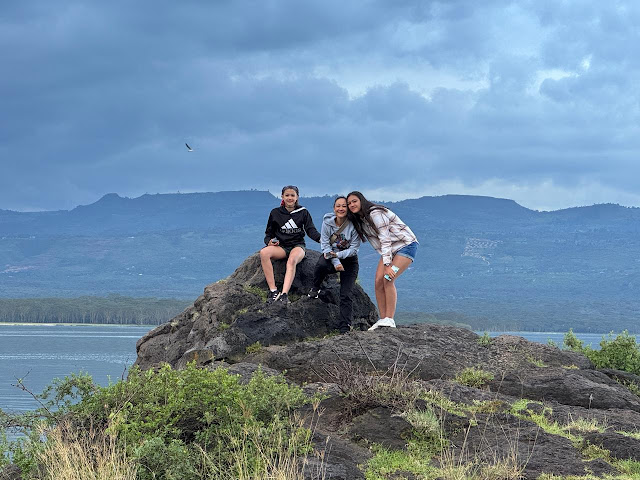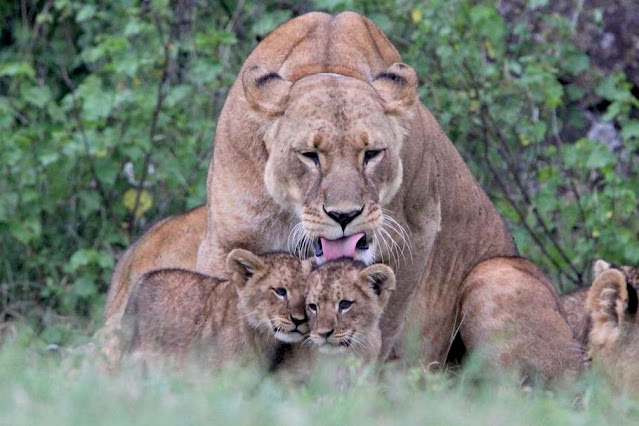As I type, it is Father’s Day. It’s not the first time I’ve spent this day away from home. The nature of my work over the past twenty years has involved considerable travel. It’s inevitable that this would cause me to be away from family on Father’s Day and/or my birthday. Being away on Mother’s Day would be more of an issue.
* * *
Uncommon Rain
I’ve been in Mogadishu for about three days and so far it has rained each day, even if for brief periods. That’s uncommon, in fact I think it’s the first time in the 8+ years that I’ve worked here that this has happened (in the end, it rained at least once each day for seven days).
It has been enough to create havoc in a city that has terrible drainage. I was told that between the 1950s and 1980s, infrastructure in the city was quite good. The Italians had invested in roads, water and sewage prior to independence in 1960 and it was maintained fairly well until the civil war began in the early 90s. At that point the city was more or less destroyed. Since the war ended in the 2000s, conflict and corruption have hampered investments in infrastructure. Though there has been a construction boom over the last decade, the underlying infrastructure is not keeping pace. Even marginal amounts of rain can create mayhem.
For some, the consequences can be devastating, including people dying from the collapsing of buildings or consuming tainted water. For others, it is more the nuisance of impassable roads, flood damage and soaking your shoes. Regardless of the impact, there doesn’t seem to be much ability or will to make the necessary changes.
Even within the “green zone”, a relatively small amount of rain can create issues. I attended a meeting last Thursday and water was up to the doors of the armored vehicle. One would think that the UN could make the necessary changes, particularly given their resources, the relatively flat terrain and proximity to the coast. In addition to a lack of will, there seems to be a lack of ownership given the ambiguous nature of land that is technically in Somalia but practically being run the by the UN.
The obvious positive aspect to this is that parts of Somalia are receiving more rain than anticipated, making them less vulnerable to possible drought in the coming dry season.
* * *
Socializing
As I’ve mentioned recently, I’m not able to spend as much time in Somalia as I was before given the funding reductions over the last few months. While it allows me more time with family (a good thing), it complicates the ability to do my job. It is essential that I maintain contact with the work on the ground, with my team and with the government and other partners. It’s a big part of what I do and sitting in Nairobi complicates things unless I can arrange some of these engagements there.
On this trip, I was invited to an event with the outgoing head of UNICEF. She’s a wonderful, talented woman and I’ve enjoyed working with her. I’m sad to see her go.
The event, held at the UNICEF office, was relatively small and consisted of people that worked more closely with her. I knew about half of those who attended, and it was a good opportunity to reconnect with a lot of people I hadn’t seen for a while (and a good opportunity to network with a lot of people at the same event – a bonus since I’m not here as often).
It was also a nice opportunity to have different foods. The cook at our guesthouse is quite good and I have no complaints. Though she seems to have a fairly limited rotation of meals. I need to be careful as well. I noticed that if I say something nice about one of the dishes, I tend to see it a lot thereafter. Case in point, I had a really nice camel stew a few months ago. I commented on how good it was and now it appears for dinner every couple of days.
* * *
The Mosque
Being in Mogadishu on the weekend isn’t ideal given that not much is happening in the office, and I miss out on a weekend with my family. On this occasion, however, I did fill the space with a couple of meetings in the “green zone” and I was able to lower my head and catch up on copious amounts of emails and other work.
On Friday, a colleague reached out to me and asked if I wanted to go to the mosque. He was graciously seeking to extract me from the confines of the guesthouse, particularly over the quiet weekend. And I think he also just likes to chat. Unlike other countries, most Somalis (except the tiny minority that work inside the “green zone”) don’t often get chances to interact with foreigners, particularly Westerners, given the security situation. So I’m a bit of a novelty.
 |
| visit to a mosque in Cote d'Ivoire in 1990 |
I had never been to this mosque. I’ve been to other mosques in Cote d’Ivoire, Istanbul and Jerusalem. At the Dome of the Rock in Jerusalem, I had only made it just inside the entrance when some unrest nearby (protests, rock throwing, etc.) caused them to abruptly close the mosque and thwart my chance to see the interior.
 |
| Istanbul in the early 90s |

an early 90s photo of the Dome of the Rock in Jerusalem as they were shutting the area down due to unrest
The Ali
Jimale Mosque is near our office and was built since I’ve been working in
Somalia. It took about two years to construct at a cost of around $12 million. It’s
inspired by Turkish (Ottoman-style) mosques, unsurprisingly since Turkey
maintains a big influence on this country, both economically and socially.
It’s a stunning building. I’ve seen it from a distance since it was built but I never thought I would be able to visit, primarily due to security reasons. As you might guess, tourism is not a big thing in Mogadishu, particularly for some ethnicities and nationalities.
I figured that if I had the green light from my security guy (whom I trust after years of working together), I was game. He said to keep it short for obvious reasons and we would aim for a time when the mosque was the least busy. Fridays are the big days for the mosque, while Saturdays tend to be much less busy. We just needed to wait until after the Asr (afternoon) prayers.
When we arrived at the gate, the armed guard made a brief check of the vehicle. He was taken aback when he saw the white guy in the backseat but then smiled and waved us in. As we exited the vehicle and began to walk in the courtyard, I did get some stares from the few people milling about. In addition to the mosque and nearby ablution structure (for washing), there surprisingly was a coffee shop and a small store within the compound. It just seemed incongruous to have a couple of drab-looking businesses in such a beautiful, sacred place. Having said that, it is handy. We bought a couple of teas to go and found a place to sit in the early evening breeze.
We chatted for a while, enjoying the peaceful and amazingly clean setting. Over the ocean, dark clouds were slowly moving in our direction. We walked around a bit more and then the rain hit, putting an end to our little excursion. We jumped back into the vehicle and the driver took us back to the office. In addition to another café nearby which has beefed up security, I now have two outings I can do in our neighborhood (without going into the airport compound). I can also go across town to the beach area for lunch on occasion but that can be done rarely and with an armed escort (sadly).
* * *
I’m now writing this at the end of the week in the Mogadishu airport. I’m not allowed to post things while I’m in country for security reasons (which may provide information as to my whereabouts), so anything I send out needs to be done once I’m no longer in the country, or at least when I’m in a more secure location – like being on my way out.
It’s been a productive visit. A lot was accomplished. But happy to be reunited with the family.

























